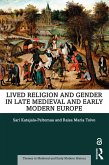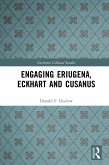Analysing the thirty-four surviving manuscript copies, this book studies the way the text was transcribed, the notes that readers made in the margins, and the contexts in which it was copied. Critically, this book also puts the transmission analysis into the broader context of major European historical developments. This context reveals that Contra legem became a tool for Europeans who linked fear of the Ottoman Empire to instability within the Church. Specifically, readers used Riccoldo's descriptions of the dangers of the Qur'an to conflate the Ottoman Empire with a broader Islamic threat to Christian society. Such positioning helped readers to substantiate the divine authority of the western Church - and especially the papacy - as a bulwark against this threat.
This book will be of interest to scholars working on interreligious dialogue and Christian-Muslim relations in medieval and early modern Europe and the Mediterranean. It will appeal to historians of religion, scholars of late medieval and early modern thought, and students of pre- and early modern history at the upper undergraduate and graduate levels.
Dieser Download kann aus rechtlichen Gründen nur mit Rechnungsadresse in A, B, BG, CY, CZ, D, DK, EW, E, FIN, F, GR, HR, H, IRL, I, LT, L, LR, M, NL, PL, P, R, S, SLO, SK ausgeliefert werden.









